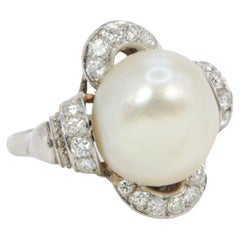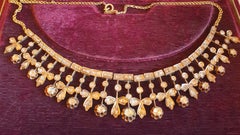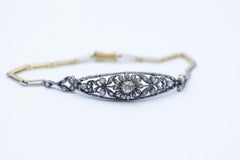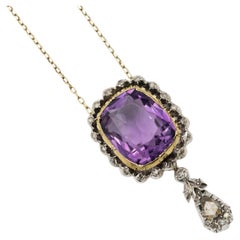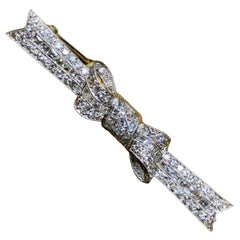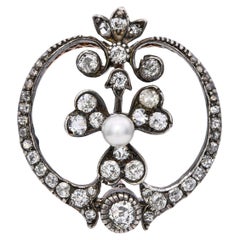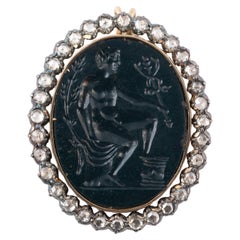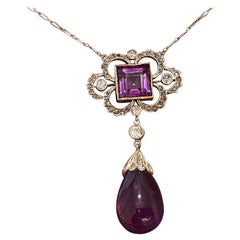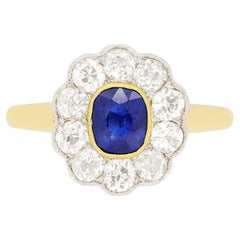Antique Diamond Setting
Early 20th Century French Art Deco Antique Diamond Setting
Diamond, Natural Pearl, Platinum
1890s Victorian Antique Diamond Setting
Diamond, 10k Gold, 14k Gold
Early 20th Century Scandinavian Art Nouveau Antique Diamond Setting
Diamond, 18k Gold, Silver
Early 20th Century Austrian Art Nouveau Antique Diamond Setting
Amethyst, Diamond, 14k Gold, Silver
Early 20th Century Art Deco Antique Diamond Setting
Diamond, 14k Gold, Platinum
Late 19th Century Edwardian Antique Diamond Setting
Diamond, Pearl, Yellow Gold, Silver
17th Century Italian Classical Roman Antique Diamond Setting
Diamond, Jasper, Gold, 18k Gold, Silver
1910s Unknown Edwardian Antique Diamond Setting
Amethyst, Diamond, Gold, 18k Gold, Platinum
1910s British Edwardian Antique Diamond Setting
Diamond, Sapphire, 18k Gold, Yellow Gold, Platinum
Early 20th Century European Art Deco Antique Diamond Setting
Diamond, Platinum
1850s Victorian Antique Diamond Setting
Diamond, Gold, 18k Gold, Yellow Gold, Silver
1910s Unknown Antique Diamond Setting
Diamond, Natural Pearl, Platinum
Early 20th Century European Antique Diamond Setting
Diamond, Pearl, 18k Gold, Yellow Gold, Platinum
1920s Unknown Antique Diamond Setting
Diamond, Gold, 18k Gold, Yellow Gold, Platinum
1890s European Victorian Antique Diamond Setting
Diamond, Gold, Silver
15th Century and Earlier American Modern Antique Diamond Setting
Diamond, White Gold
19th Century European Georgian Antique Diamond Setting
Diamond, 18k Gold, Silver, 14k Gold
Early 20th Century Antique Diamond Setting
Aquamarine, Diamond, Gold, 14k Gold, White Gold
15th Century and Earlier American Modern Antique Diamond Setting
Diamond, Chrysoberyl, Cat’s Eye, Platinum
1910s Antique Diamond Setting
Diamond, Sapphire, Platinum
1920s Art Deco Antique Diamond Setting
Diamond, Sapphire, Platinum
19th Century French Antique Diamond Setting
Diamond, Gold, 18k Gold
15th Century and Earlier American Modern Antique Diamond Setting
Diamond, Emerald, Platinum
19th Century Unknown Victorian Antique Diamond Setting
Diamond, Gold, 14k Gold, Enamel
Early 1900s British Edwardian Antique Diamond Setting
Diamond, Gold, 18k Gold
1870s British Victorian Antique Diamond Setting
Diamond, Gold, 18k Gold
1890s European Victorian Antique Diamond Setting
Diamond, Ruby, Gold, Silver
Early 1900s British Edwardian Antique Diamond Setting
Diamond, Gold, 18k Gold
1890s British Victorian Antique Diamond Setting
Diamond, Gold, 18k Gold
Early 1900s British Edwardian Antique Diamond Setting
Diamond, Gold, 18k Gold
1890s British Victorian Antique Diamond Setting
Diamond, Gold, 18k Gold
Late 19th Century European Victorian Antique Diamond Setting
Diamond, Zircon, 18k Gold, Silver
1890s Victorian Antique Diamond Setting
Diamond, Gold, 18k Gold, Yellow Gold
Late 19th Century French Napoleon III Antique Diamond Setting
Diamond, White Diamond, Gold, 18k Gold, Rose Gold
Early 1900s British Edwardian Antique Diamond Setting
Diamond, Ruby, Gold
1890s Unknown Victorian Antique Diamond Setting
White Diamond, 14k Gold
Early 20th Century Unknown Art Deco Antique Diamond Setting
Diamond, Jade, Gold, 14k Gold, Yellow Gold, Platinum
1920s Art Deco Antique Diamond Setting
Diamond, Ruby, Platinum
1920s American Art Deco Antique Diamond Setting
Diamond, Platinum
Early 20th Century Antique Diamond Setting
Diamond, Platinum
Early 20th Century Dutch Antique Diamond Setting
Diamond, Cultured Pearl, 14k Gold, Silver
Early 20th Century French Belle Époque Antique Diamond Setting
Diamond, White Diamond, Gold, 18k Gold, Rose Gold
1890s British Victorian Antique Diamond Setting
Diamond, Gold, 18k Gold
15th Century and Earlier American Modern Antique Diamond Setting
Diamond, Ruby, Platinum
19th Century Unknown Victorian Antique Diamond Setting
Diamond, 18k Gold, Yellow Gold
19th Century American Art Deco Antique Diamond Setting
Diamond, Ruby, Platinum
1890s British Victorian Antique Diamond Setting
Diamond, Gold
Early 20th Century European Edwardian Antique Diamond Setting
Amber, Diamond
1920s Unknown Antique Diamond Setting
Diamond, Gold, 14k Gold, White Gold, Yellow Gold
Early 20th Century European Antique Diamond Setting
Diamond, Gold, 18k Gold, Platinum
1920s French Art Deco Antique Diamond Setting
Diamond, White Diamond, Sapphire, Blue Sapphire, Platinum
Late 19th Century British Victorian Antique Diamond Setting
Diamond, 18k Gold, Yellow Gold
Early 1900s Unknown Edwardian Antique Diamond Setting
Diamond, 18k Gold
1910s British Art Deco Antique Diamond Setting
Diamond, Gold
15th Century and Earlier American Modern Antique Diamond Setting
Diamond, White Gold
Early 1900s British Edwardian Antique Diamond Setting
Diamond, Ruby, Gold
1910s British Antique Diamond Setting
Diamond, Sapphire, Gold
- 1
- ...
Antique Diamond Setting For Sale on 1stDibs
How Much is a Antique Diamond Setting?
The Legacy of Diamond in Jewelry Design
Antique diamond rings, diamond tiaras and dazzling vintage diamond earrings are on the wish lists of every lover of fine jewelry. And diamonds and diamond jewelry are primarily associated with storybook engagements and red-carpet grand entrances — indeed, this ultra-cherished gemstone has a dramatic history on its hands.
From “A Diamond Is Forever” to “Diamonds Are a Girl’s Best Friend,” pop culture has ingrained in our minds that diamonds are the most desired, the most lasting and the most valuable gemstone. But what makes the diamond so special? Each stone — whether it’s rubies, sapphires or another stone — is unique and important in its own right. April babies might claim diamonds for themselves, but just about everyone wants this kind of sparkle in their lives!
There are several factors that set diamonds apart from other stones, and these points are important to our gem education.
Diamonds are minerals. They are made up of almost entirely of carbon (carbon comprises 99.95 percent; the remainder consists of various trace elements). Diamonds are the hardest gemstones, ranking number 10 on the Mohs Hardness Scale. Even its name, diamond, is rooted in the Greek adamas, or unconquerable. The only object that can scratch a diamond is another diamond. Diamonds are formed deep within the earth at very high temperatures (1,652–2,372 degrees Fahrenheit at depths between 90 and 120 miles beneath the earth’s surface) and are carried up by volcanic activity. Diamonds are quite rare, according to the Gemological Institute of America, and only 30 percent of all the diamonds mined in the world are gem quality.
In the 1950s, the Gemological Institute of America developed the 4Cs grading system to classify diamonds: clarity, color, cut and carat weight. Not all diamonds are created equal (there are diamonds, and then there are diamonds). The value of the diamond depends on the clarity (flawless diamonds are very rare but a diamond's value decreases if there are many blemishes or inclusions), color (the less color the higher the grade), cut (how the diamond’s facets catch the light, certain cuts of diamonds show off the stone better than others) and carat weight (the bigger, the better).
When you start shopping for a diamond engagement ring, always prioritize the cut, which plays the largest role in the diamond's beauty (taking the time to clean your diamond ring at least every six months or so plays a role in maintaining said beauty). And on 1stDibs, a range of buying guides can be found for those in the market for antique engagement rings, vintage engagement rings or Art Deco engagement rings.
Shop antique and vintage diamond rings, diamond necklaces and other extraordinary diamond jewelry on 1stDibs.
- What is an illusion-set diamond?1 Answer1stDibs ExpertApril 5, 2022An illusion diamond setting helps to enhance the size of the stone. The precious metal the ring is made from is intricately designed around the diamond. From a distance, this makes the diamond itself appear much larger. Shop a collection of illusion-set diamonds from some of the world’s top sellers on 1stDibs.
- What is a flower set diamond?1 Answer1stDibs ExpertApril 5, 2022A flower set diamond is a setting where a diamond is surrounded by a smaller cluster of diamonds, giving the appearance of a flower. Flower set diamonds are a popular choice to add more sparkle and increase the size of a piece. Browse an array of flower set diamond jewelry on 1stDibs.
- 1stDibs ExpertApril 5, 2022A channel diamond setting refers to a diamond gemstone ring with a specific setting called a channel. It is a deep groove carved into the metal band. A jewelry maker sets diamond accent stones into the setting so they are level with the shank. You'll find a collection of diamond gemstone rings on 1stDibs.
- 1stDibs ExpertOctober 12, 2021One of the best settings for oval diamonds is the prong. The most frequent and classic setting type, it exposes the majority of the diamond and lets more light penetrate, increasing its brightness and shine.
- 1stDibs ExpertSeptember 28, 2021The best setting for a solitaire diamond is the prong setting. In such a setting, the stone is held in place with a minimal amount of metal allowing more light to pass through the diamond resulting in added brilliance. Find a collection of solitaire diamond jewelry on 1stDibs.
- 1stDibs ExpertDecember 12, 2023Whether Cartier will set a loose diamond depends on the circumstances. If you purchased a piece of Cartier diamond jewelry and the stone has come loose, contact customer service for assistance with repairs. Cartier will usually not place a loose diamond that you purchased elsewhere in one of their settings. Find a wide range of Cartier diamond jewelry on 1stDibs.
- 1stDibs ExpertNovember 5, 2024To identify an antique tea set, look closely to determine who the manufacturer is. Locate the hallmark on the bottom of a saucer, teapot or cup. A maker’s mark on one of these items is the best indicator of the set’s origin. If you snap a photo with your smartphone or tablet, you can conduct a reverse image search to jump-start your research. Professionals recommend consulting auction catalogs, books and trusted online resources such as museum exhibition materials. With some research, you may be able to match the marking to the manufacturer's name and, from there, identify the pattern and age.
In 17th-century England, Chinese tea began to arrive at ports in London. Mass production of porcelain tea sets took place in the 18th century, and during the early 1800s, tea became widely affordable, and the concept of teatime took shape all over England.
Reputable soft-paste porcelain makers include Sèvres, Capodimonte and Chelsea, while Meissen was the first European maker of hard-paste porcelain. Bone china manufactories of note include Spode, Minton and Derby, which was later called the Royal Crown Derby Porcelain Company.
Generally, a tea set is considered vintage if it’s at least 20 years old, while antiques are at least 100 years old. Although a maker’s mark is generally a helpful indicator of a given manufacturer, forgeries have occurred over the years. Look for other signifiers of a material, time period or style if you are uncertain of your piece’s origin. For help with identification, seek out a certified appraiser or knowledgeable antique dealer.
Find antique tea sets on 1stDibs. - 1stDibs ExpertOctober 5, 2021The best setting for a cushion-cut diamond depends on personal preference. The cushion cut is often referred to as a pillow cut due to its square or rectangular shape with rounded edges. This stone cut comprises 58 facets, like brilliant stones. The cushion cut has been popular since the 18th century. Browse a collection of cushion-cut diamond jewelry on 1stDibs.
- 1stDibs ExpertNovember 14, 2023Most experts agree that a prong setting is best for diamond stud earrings. Prongs help keep diamonds securely in place. Three-prong settings allow for more of the diamond to remain visible, while four-prong settings may be slightly more secure. For diamond stud earrings with weights of 2 carats or more, a six- or eight-prong setting can increase stability and security. Explore a large selection of diamond stud earrings on 1stDibs.
- 1stDibs ExpertApril 5, 2022The difference between pavé and channel set diamonds is the setting. On pavé jewelry, tiny beads or prongs hold the individual gemstones in place. Channel settings are deep grooves that hold diamonds, eliminating the need for prongs or beads. Shop a large collection of diamond gemstone jewelry on 1stDibs.
- 1stDibs ExpertOctober 19, 2021A marquise-cut diamond looks great in a variety of settings, but you should choose one that protects the center stone. Some of the top marquise diamond ring settings are bezel, prong and halo. Find a variety of marquise-cut diamond rings on 1stDibs today.
- 1stDibs ExpertOctober 5, 2021The best setting for an emerald-cut diamond is a matter of personal preference. For emerald-cut diamonds, solitaire and pavé settings are popular. The emerald cut comprises 58 facets and truncated corners on a rectangular step-cut stone. The flat pavilion of an emerald-cut diamond can magnify the stone’s imperfections, so the gem’s clarity is key. Initially a popular cut for emeralds only, it is now used on other precious stones, but the name has come to define the style. Find antique and vintage emerald-cut diamond jewelry on 1stDibs.
- 1stDibs ExpertDecember 4, 2023There is no single best setting for a diamond tennis necklace. You can find tennis chains with both prong and bezel settings, and both types can keep diamonds secure when they are well crafted. The biggest difference is that full bezel settings encircle the gemstones, while prongs hug the stones with three or four metal elements, leaving most of their edges visible. Feel free to choose the type of setting that appeals most to you. On 1stDibs, explore a wide range of diamond tennis necklaces.
